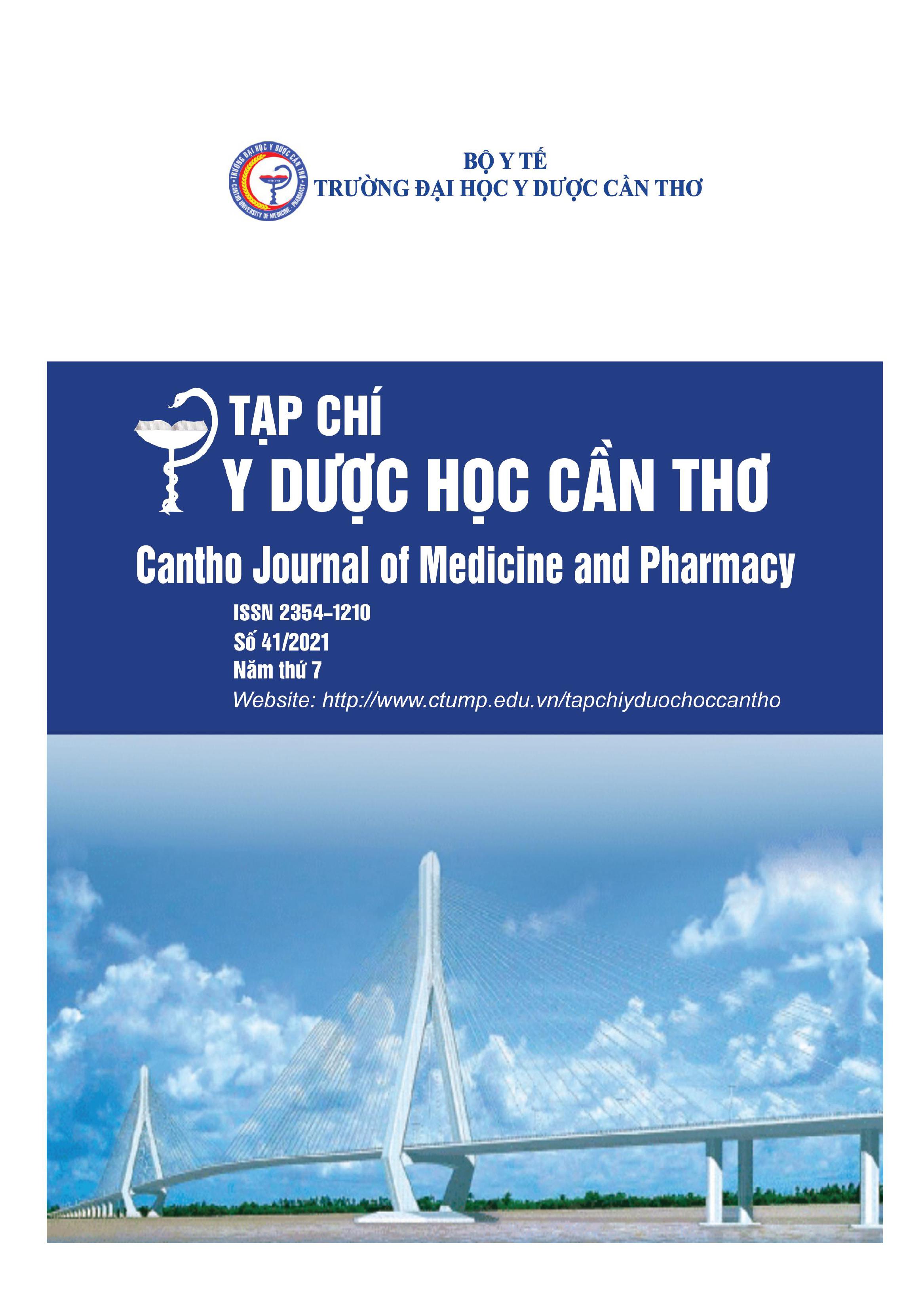THE CLINICAL CHARACTERISTICS OF KELOIDS AND HYPERTROPHIC SCARS TREATED WITH TRIAMCINOLONE INTRALESIONAL INJECTION
Main Article Content
Abstract
Background: Keloids, hypertrophic scars can cause aesthetically disfiguring, functionally debilitating, emotionally distressing, and psychologically damaging; therefore, them reducing the life quality of patients. The clinical characteristics may affect the result of triamcinolone intralesional treatment. Objectives: Describe clinical characteristics of keloids, hypertrophic scars of patients treated with triamcinolone intralesional injection at Can Tho University of Medicine and Pharmacy Hospital and Can Tho Dermato-Venereology Hospital 2019-2021. Materials and methods: Cross-sectional descriptive study was carried out on 80 patients with keloids, hypertrophic scars at Can Tho University of Medicine and Pharmacy Hospital and Can Tho Dermato-Venereology Hospital in 2019-2021. Results: The main causations of scarring were spontaneous 48.83%, acne 23.26% and skin injuries 24.03%. Most scars have a duration of ≥ 1 year, the most common locations were the chest and pre-sternum. The scar area ranged from 0.4 to 20cm2, with median of 2cm2. The rate of pain and the mean VSS score were higher in patients with ≥ 5cm2 scar (p < 0.001). Conclusion: Most of the scars were small, spontaneous, ≥ 1 year, located in the chest and pre-sternum. The rate of pain and the mean VSS score were relative to the scar area (p < 0.001).
Article Details
Keywords
Keloids, hypertrophic scars, clinical characteristics
References
2. Đinh Hữu Nghị, Nguyễn Hữu Sáu, 2010. Đánh giá hiệu quả điều trị sẹo lồi bằng tiêm triamcinolone acetonid (TAC) trong thương tổn. Y học lâm sàng, 53, tr.32-38.
3. Trace A. P., Enos C. W., Mantel A., et al. 2016. Keloids and hypertrophic scars: a spectrum of clinical challenges. Am J Clin Dermatol, 17(3), pp.201-223.
4. Habif T. P., et al, 2017, Skin Disease: Diagnosis and Treatment Fourth Edition, Elsevier, pp.432-434.
5. Bolognia J. L., Jorizzo J. L., and Schaffer J. V., 2017, Dermatology Fourth Edition, pp.17121716.
6. Garg A. M., Shah Y. M., Garg A., et al., 2018. The efficacy of intralesional triamcinolone acetonide (20mg/ml) in the treatment of keloid. International Surgery Journal, 5(3), pp.868-872.
7. Belie O., Ugburo A., and Mofikoya B., 2019. Demographic and clinical characteristics of keloids in an urban center in Sub-Sahara Africa. Nigerian journal of clinical practice, 22(8), pp.1049-1054.


